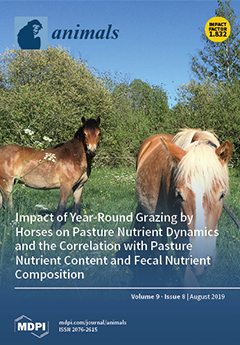Organic manganese (Mn) sources can replace inorganic Mn as dietary Mn supplements in poultry. To compare the uptake of Mn from the Mn-lysine complex (MnLys) and MnSO
4, we first established the primary chicken intestinal epithelial cells (IECs) model and used it to determine Mn uptake. The MnLys increased the uptake of Mn compared to MnSO
4. The uptake of Mn decreased in the IECs with Fe addition in the medium regardless of the Mn sources. The MnLys decreased the Mn
2+ efflux transporter ferroportin 1 (FPN1) mRNA level but did not influence the Mn
2+ influx transporter divalent metal transporter 1 (DMT1) mRNA expression when compared to MnSO
4. The results above indicated that the increase of Mn accumulation for MnLys at least partly was due to the decrease of Mn efflux by reduced FPN1 expression. The addition of
N-ethylmaleimide, an L-lysine transport system y
+ inhibitor, decreased the uptake of Mn from MnLys but did not affect the uptake of Mn from MnSO
4. The cycloheximide, as an L-lysine transport system b
0,+ activator, increased the uptake of Mn from MnLys, whereas they did not influence the uptake of Mn from MnSO
4. The MnLys increased the system y
+ members cationic amino acid transporter (CAT) 1 and CAT2, and system b
0,+ components rBAT and b
0,+AT mRNA expression when compared to MnSO
4. These results suggested that the uptake of MnLys complex might be transported by CAT1/2 and system b
0,+, which was different from the ionized Mn
2+ uptake pathway. In conclusion, the uptake of Mn from MnLys complex not only might be uptake through the ionized Mn
2+ pathway, but also appeared to be transported through the CAT1/2 and system b
0,+ in primary chicken IECs.
Full article






